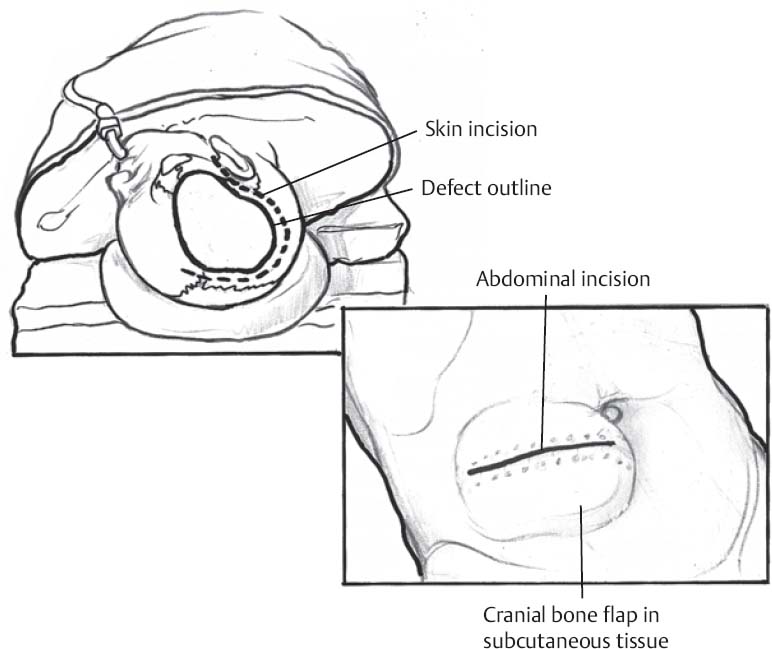♦ Preoperative
Operative Planning
- Repair of skull defect can be performed acutely in clean cases
- In cases of hemicraniectomy for control of elevated intracranial pressure, repair is performed following resolution of intracranial hypertension
- In contaminated cases, wait 3 to 6 months before repair is attempted
- Shunt may be placed preoperatively in those with external hydrocephalus
Equipment
- Major craniotomy tray
- Mayfield head holder
- High-speed drill
- Methyl methacrylate, hydroxyapetite cement, or substitute (Norian [Norian Corporation, Cupertino, CA], Bonesource [Stryker-Leibinger, Kalamazoo, MI], HydroSet [Stryker], etc.) (optional)
- Titanium microplates and screws (optional)
- Titanium mesh (optional)
Operating Room Set-up
- Headlight
- Loupes
- Bovie cautery and bipolar cautery
Anesthetic Issues
- Intravenous antibiotics (cefazolin 2 g) should be given 30 minutes prior to incision
♦ Intraoperative
Positioning
- Depends on location of defect
- Consider placing lumbar drain to remove cerebrospinal fluid, thus decreasing intracranial pressure and allowing more room for cranioplasty
Planning of Sterile Scrub and Prep
- As for craniotomy
Exposure
- Typically, previous incision is used and/or previous laceration is in part used
- Flap is carefully elevated from underlying scar and dura; use of blunt dissection and/or sharp dissection
- Brain may be adherent to scar and skin in cases of incompetent dura
- Edges of bone identified with a curette or periosteal elevator
- Dura covered with compressed Gelfoam or DuraGen
< div class='tao-gold-member'>
Only gold members can continue reading. Log In or Register to continue
Stay updated, free articles. Join our Telegram channel

Full access? Get Clinical Tree






